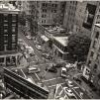M240 black and white conversions??
-
Recently Browsing 0 members
- No registered users viewing this page.
-
Similar Content
-
- 21,052 replies
- 1,033,615 views
-
- 179 replies
- 10,788 views
-
- 21 replies
- 2,258 views
-
- 11 replies
- 2,737 views
-
- 11 replies
- 509 views
-





Recommended Posts
Join the conversation
You can post now and register later. If you have an account, sign in now to post with your account.
Note: Your post will require moderator approval before it will be visible.